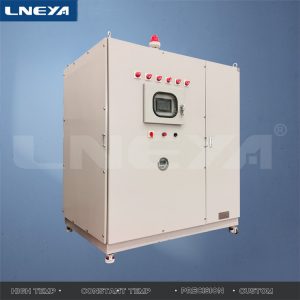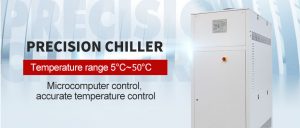Istruzioni per l'uso della camera di prova a bassa temperatura
Il low temperature test chamber is a necessary test equipment in aviation, automobile, household appliances, scientific research and other fields. It is used to test and determine the parameters and performance of electrical, electronic and other products and materials after the temperature environment changes in high temperature, low temperature, or constant test.
Il low temperature test chamber can be used to check and determine the temperature cycling changes of electrical, electronic products or materials, and produce the adaptability of storage and use under environmental conditions. The equipment adopts forced air circulation to maintain the uniformity of temperature in the working room, with green environmental protection, micro-computer control, temperature digital display, adjustable temperature in the box, high-density insulation layer, good insulation effect, energy saving.
Il low temperature test chamber should never be used for testing the following objects or those containing them:
(1) Explosives:
1. Nitroglycol (ethylene glycol dinitrate), nitroglycerin (propylene glycol trinitrate), nitrocellulose and other explosive nitrates.
2. Trinitrobenzene, trinitrotoluene, trinitrophenol (picric acid) and other explosive nitro compounds.
3. Peracetic acid, methyl ethyl ketone peroxide, benzoyl peroxide and other organic peroxides.
(2) Combustibles:
1. Spontaneous combustion:
Metals: lithium, potassium, sodium, yellow phosphorus, phosphorus sulfide, red phosphorus.
Cerules: calcium carbide (calcium carbide), phosphatized lime, magnesium powder, aluminium powder, sodium bisulfite.
2. Categories of oxide properties:
(1) Potassium chlorate, sodium chlorate, ammonium chlorate and other chlorates.
(2) Potassium peroxide, sodium peroxide, ingot peroxide and other peroxide salts.
(3) Potassium peroxide, sodium peroxide, barium peroxide and other inorganic peroxides.
3. Flammables:
(1) Ether, gasoline, propylene oxide, carbon disulfide and other substances whose ignition point is less than – 30 C.
(2) Common ethane, oxidized alkene, acetone, benzene, methyl ethyl ketone and other substances whose ignition point is above – 30℃ but below 0℃.
4. Flammable gases:
Hydrogen, acetylene, ethylene, methane, ethane, propane, butane and other gases that may burn at 1 atmospheric pressure at 15 C.
Raccomandazioni correlate
-
Where can industrial heating circulators be useful?
1802The industrial heating circulator can provide a circulation device of cold source and heat source, and has a wide working range. It is used in the pharmaceutical, chemical, biological and other industries to provide heat and cold sources for reac...
Visualizza dettagli -
Suggerimenti per il rilevamento di perdite nel congelatore a bassa temperatura
1472Rilevamento delle perdite per immersioneLa sensibilità del rilevamento delle perdite per immersione è superiore a quella del test delle bolle, che viene solitamente applicato alle piccole unità freezer Freon. Quando si utilizza, l'apparecchiatura che non può entrare in contatto con l'acqua nel sistema deve essere...
Visualizza dettagli -
Quali sono i principali vantaggi dei raffreddatori a olio per l'industria biofarmaceutica?
1284Nel sistema di refrigerazione del radiatore ad olio dell'industria biofarmaceutica, il compressore, l'evaporatore e il condensatore sono le parti indispensabili del sistema di refrigerazione. Il condensatore è l'apparecchiatura che emette calore, che combina...
Visualizza dettagli -
Come acquistare un sistema di test della temperatura dei chip di gestione dell'alimentazione?
1866Il sistema di test della temperatura dei chip di gestione dell'alimentazione è un'apparecchiatura importante utilizzata per testare le prestazioni e l'affidabilità dei chip a semiconduttore in diversi ambienti di temperatura. Quando si acquista questo tipo di apparecchiatura di prova, è necessario...
Visualizza dettagli
 Refrigeratori industriali LNEYA Produttore Fornitore
Refrigeratori industriali LNEYA Produttore Fornitore












